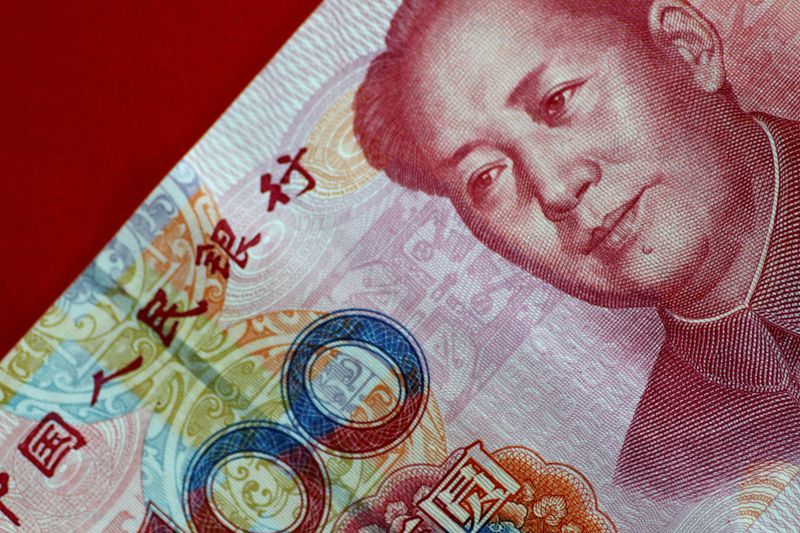China cuts borrowing rate more than expected to revive housing sector

SHANGHAI (Reuters) -China cut its benchmark reference rate for mortgages by an unexpectedly wide margin on Friday, its second reduction this year as Beijing seeks to revive the ailing housing sector to prop up the economy.
Senior officials have pledged further measures to fight a slowdown in the world’s second-biggest economy, hit by COVID-19 outbreaks that prompted stringent measures and mobility restrictions and causing huge disruptions to activity.
Many market participants believe Friday’s move was also a response to Chinese Premier Li Keqiang’s call to decisively step up policy adjustments and let the economy return to normal quickly.
“Today’s reduction to the five-year Loan Prime Rate should help drive a revival in housing sales, which have gone from bad to worse recently,” Julian Evans-Pritchard at Capital Economics said in a note.
“But the lack of any reduction to the one-year LPR suggests that the PBOC is trying to keep easing targeted and that we shouldn’t expect large-scale stimulus of the kind that we saw in 2020.”
China, in a monthly fixing, lowered the five-year loan prime rate (LPR) by 15 basis points to 4.45%, the biggest reduction since China revamped the interest rate mechanism in 2019 and more than the five or 10 basis points tipped by most in a Reuters poll. The one-year LPR was unchanged at 3.70%.
The country’s benchmark stock index, Shanghai Composite Index, rose roughly 1% in early trading on the rate cut on Friday. The move failed to excite mainland-listed property shares, which were flat, although Hong Kong-listed developers inched up slightly.
Many private-sector economists expect China’s economy to shrink this quarter from a year earlier, compared with first quarter’s 4.8% growth. Indicators from credit lending, industrial output and retail sales showed COVID-related stringent measures and mobility restrictions have taken a heavy toll.
A key drag on growth has been the property sector, which policymakers are seeking to turn around. Property and related industries such as construction account for more than a quarter of the economy.
China’s property sales in April fell at their fastest pace in around 16 years, while new new-home prices declined for the first time month-on-month since December, hurt by weak demand amid wide COVID-19 lockdowns.
“Policymakers might have reached a consensus on whether to revive the property sector,” said Xing Zhaopeng, senior China strategist at ANZ, predicting further easing measures.
LIMITED ROOM FOR CUTS
The central bank has pledged to step up support for the slowing economy, but analysts say the room to ease policy could be limited by worries about capital outflows, as the Federal Reserve raises interest rates.
Capital Economics believes the lack of a one-year LPR cut suggests the central bank may be concerned about the potential impact on capital outflows and the yuan.
The LPR is a lending reference rate set monthly by 18 banks and announced by the People’s Bank of China. Banks use the five-year LPR to price mortgages, while most other loans are based on the one-year rate. Both rates were lowered in January to support the economy.
Friday’s cut suggests that “China’s economic growth was facing increasing resistance this year,” said Marco Sun, chief financial market analyst at MUFG Bank.
Eighteen of 28 traders and analysts in a Reuters poll had forecast a reduction in either rate, including 12 who expected a 5-basis-point cut for each tenor.
A campaign by the authorities to reduce high debt levels became a liquidity crisis last year among some major developers, resulting in bond defaults and shelved projects, shaking global financial markets.
Since the end of last year, Beijing has taken steps to help revive the property sector. Those include making it easier for large and state-owned developers to raise funds, relaxing rules on escrow accounts for pre-sale funds and allowing some local governments to cut mortgage rates and down-payment ratios.
This week, financial authorities cut the floor of mortgage rates for some home buyers. But that measure and Friday’s cut alone will not ease the financing stresses for developers, many of whom are struggling to refinance debt..
Goldman Sachs estimates that the first-home mortgage rate floor would be lowered further to 4.25% from 4.4% previously.
Property shares have rebounded recently, but the muted reaction to Friday’s cut suggests some investors think it may not be enough to revive the struggling sector.
(Reporting by Winni Zhou, Andrew Galbraith, and Kevin Yao, Editing by William Mallard and Sam Holmes)

























comments